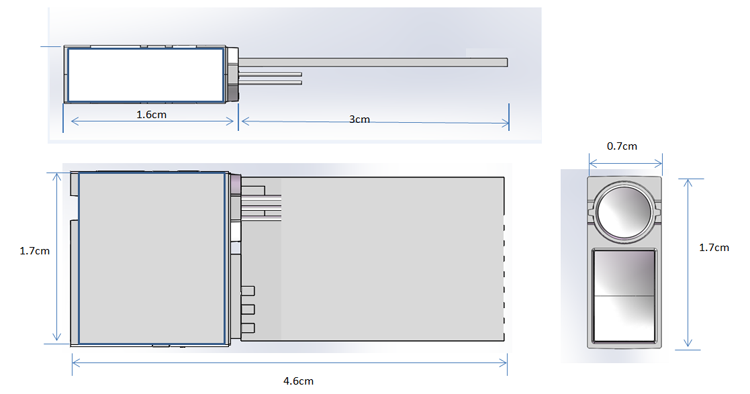The development of domestic Internet medical care is considered to be divided into three stages: the “connected medical care†that connects the entire elements of the medical industry with the Internet; the “quality medical care†that improves the quality of medical care in the Internet, and the “controllable†of intelligent management of medical insurance data in the cloud. Medical". In 2016, the Internet medical industry is moving forward in the second phase. Typical models include Internet hospitals, general/specialist clinics, and third-party medical service centers. We believe that Internet medical care is not a simple online flow offline, but opens the hospital wall more deeply, reshapes the medical treatment process, and improves medical efficiency and quality. This article explores the changes that Internet health brings to specialist clinics/hospitals. The following is the wonderful content of the finishing. Dual evolution of specialist clinics/hospitals: marketization and professional chaining Open public hospitals (mostly set by the government for certain public health purposes, such as infectious disease hospitals, maternal and child health hospitals, etc.), the development of private specialist clinics/hospitals originates from the liberalization of policies (2001 is a watershed), ie medical Marketization advances. The marketization of the domestic medical system is divided into two levels: the price factor and the marketization of the doctor's factor. The development of different professional fields is gradually expanding with the degree of marketization of the two elements. 1) The marketization of price factors has spurred the first wave of development of private specialties, and the development of professional and technical content is the first. The plastic surgery, oral cavity, and physical examination in the lower right corner of Figure 1 is a typical example of this. The charging range is not within the scope of medical insurance, and the technical complexity is also the lowest in specialist medicine. The specialists in these three fields are also the first to move in the market because they can get better income in the private sector (of course, the plastic surgery and physical examination fields are not dependent on doctors). 2) The marketization of doctors' factors has spurred the second wave of development of private specialties, and the specialist fields with higher technical content have begun to exert their strength. Maternity, orthopedics, ophthalmology, dermatology, Chinese medicine and other professional departments require higher prices in the market and the semi-marketization of doctors (only the value-added services are self-funded in the price, doctors use the semi-market form of flying knife or multi-point practice to participate. ). The latest trend is that private capital has begun to penetrate into the specialized fields of cardiovascular and oncology with the highest technical content and large coverage of medical insurance. The next step in the specialization should be that it is chained. The clinic is small, the medical team is low, and the copying is easier. Chain dental clinics, medical examination centers, and Chinese medicine clinics are currently the most mature areas of development. Large chain groups have the capacity of hundreds of clinics. The chain of specialist hospitals is more complicated and has a longer cycle, but it can also develop rapidly with the help of the capital market. However, in the chain development of traditional offline specialist clinics/hospitals, there is a shortage of specialists and brand management problems. The former involves the marketization of doctors' factors and medical skills training, while the latter involves the standardization of clinical treatment pathways and the standardization of management processes. IT02S, is JRT new product in the early 2019, which is a single-point LiDAR sensor, also called tof distance sensor. With a micro size of 46x17x7mm, customers can widely use in many Laser Measurement Solutions. The lidar distance sensor can measure 12m short-range with high frequency up to 100hz. It's great for Unmanned Aerial Systems. If you need us send you data sheet and spec for this products, offering sample as well, pls tell us, thank you.
Accuracy
+/-8cm@ 0.1~3.5m
Measuring Unit
cm
Measuring Range (without Reflection)
0.1-12m
Measuring Time
0.1~3 seconds
Measuring Frequency
100 Hz
Laser Class
Class II
Laser Type
650nm, <1mw, red
Weight
About 5g
Voltage
DC2.5V~+3.5V
Serial Level
TTL 3.3V
Size
46*17*7mm
Operating Temperature
0-40 ℃ (32-104 ℉ )
Storage Temperature
-25~60 ℃ (-13~140 ℉)
2D Laser Distance Sensor,2D Lidar Sensors,Tof Lidar Distance Sensor, Flight Distance Sensor Chengdu JRT Meter Technology Co., Ltd , https://www.accuracysensor.com![[Viewpoint] How to develop under the Internet medical line](http://i.bosscdn.com/blog/14/72/01/7485528387.png)
Figure 1 Specialist clinic/hospital development data source: Health Planning Commission
IT02S Mini Tof Sensor Module Diagram

Parameters of IT02S:
IT02S – the High performance-price ratio measurement solution
* low power consumption of single transmit and single receive
* small size: 46*17*7mm
* low cost
* proffessional techinical support